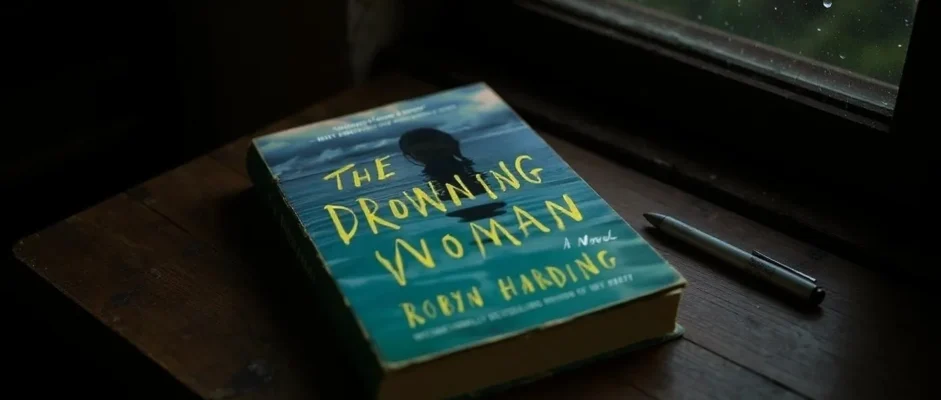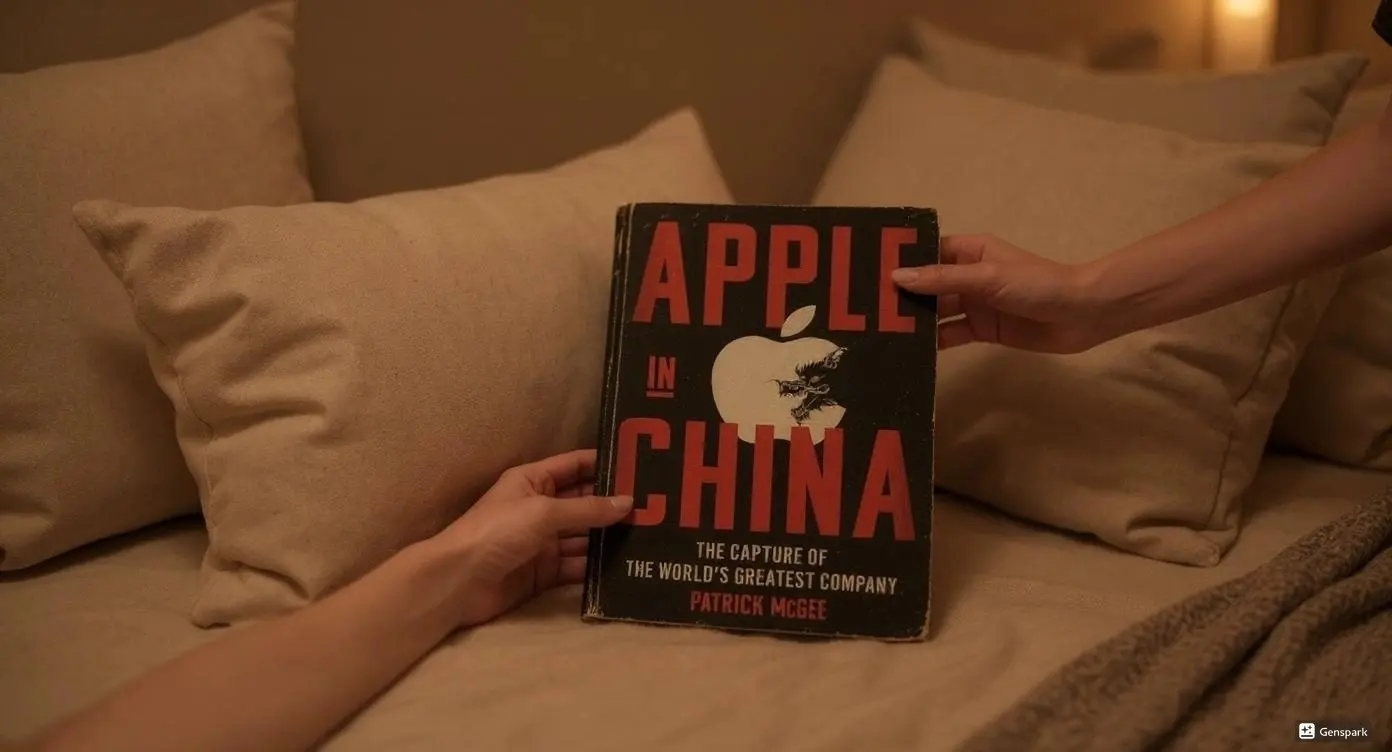I picked up The Drowning Woman at 11:47 PM on a Tuesday night, curled up on my couch with chamomile tea steaming beside me. Rain drummed against my windows as I read about Lee pulling Hazel from dark water. By 3:22 AM, I was wide awake, heart pounding, questioning everything I thought I knew about these women.
Robyn Harding has built her reputation crafting morally complex female characters who make readers uncomfortable in the best way. After devouring her previous thriller The Perfect Family, I expected sharp social commentary wrapped in addictive plotting. What I discovered was a story that cuts deeper—examining how desperation transforms good people into dangerous ones.
The premise grabbed me immediately: Lee, a former chef living in her car after COVID destroyed her restaurant, saves wealthy Hazel from drowning. What starts as a rescue becomes a twisted dance of manipulation and survival. I found myself rooting for both women while simultaneously fearing what they might do next. This book left me questioning which lies might actually be acts of love and whether I’d make the same choices under similar pressure.
Key Takeaways
Class Division Creates Authentic Character Tension: The gap between Lee’s homelessness and Hazel’s wealth feels brutally real, driving every interaction with economic desperation.
Domestic Abuse Gets Complex Treatment: Harding shows how financial control and isolation can be more effective than physical violence at trapping victims.
COVID Context Adds Devastating Believability: Lee’s restaurant failure captures how the pandemic destroyed small businesses overnight, making her desperation feel timely.
Dual Narrators Keep Readers Guessing: Alternating perspectives create genuine uncertainty about each woman’s true motivations and reliability.
Plot Coincidences Strain Final Act: Multiple convenient developments test credibility despite strong character development throughout.
Basic Book Details
- Publishing Information: October 4, 2022 by Grand Central Publishing
- Genre: Psychological Thriller/Domestic Suspense
- Plot: Homeless former chef rescues wealthy woman from drowning, leading to dangerous entanglement in each other’s secrets
- Series Information: Standalone novel
- Page Count: 320 pages
- Main Characters: Lee Gulliver (fallen restaurateur facing homelessness), Hazel Laval (trapped in controlling marriage seeking escape)
My Reading Experience and Analysis
I devoured this book over a single rainy weekend, completely absorbed by two women drowning in different ways. The opening chapters hooked me with Lee’s backstory—watching her prestigious restaurant crumble during COVID felt devastatingly real. I’ve worked in food service, and Harding nailed the financial domino effect of business failure.
Character Development That Hits Different
Lee’s psychology fascinated me most. Harding avoids romanticizing homelessness, showing the daily humiliations of living in a car, managing hygiene at gas stations, and dodging sketchy loan sharks. When Lee describes her former life running a “high-end, fancy-schmancy eatery,” I felt the weight of her fall from grace.
The scene where Lee pulls Hazel from the water had me completely hooked. I kept reading past midnight trying to figure out who was manipulating whom. Both women hide secrets that transform earlier scenes once revealed—I found myself flipping back to catch details I’d missed.
Hazel’s character proves more complex than typical “wealthy trapped wife” tropes. Her husband doesn’t just control money—he controls her social connections, daily schedule, and self-perception. Harding shows how financial dependence creates prison bars as effective as any physical restraint.
Narrative Structure and Pacing
The alternating first-person perspectives work brilliantly for building suspense. I never knew which narrator to trust, making every revelation feel like a gut punch. Harding keeps readers “one step ahead” of expectations through strategic information drops.
The dual POV structure maintains excellent tension through the first two-thirds. Both women reveal themselves gradually through internal monologues and interactions, creating psychological depth rare in thrillers.
Social Commentary That Cuts Deep
What sets this apart from typical domestic suspense is Harding’s class consciousness. Lee’s homelessness isn’t plot device—it’s authentic social commentary about how quickly stability can collapse. The author clearly researched the logistics of car living and social services navigation.
The domestic violence storyline avoids simplistic victim narratives. Hazel’s husband uses psychological and financial control rather than just physical abuse, showing how manipulation can be more effective than violence.
Plot Mechanics and Coincidences
The book’s biggest weakness emerges in the final act when coincidences pile up. Multiple convenient encounters and unlikely revelations strain the realistic foundation Harding builds so carefully. Several reviewers noted how “ridiculous the book got” with thriller tropes overwhelming character development.
The early twists emerge organically from character flaws and past mistakes. Later reveals feel more forced by genre conventions requiring multiple surprises rather than natural story progression.
Writing Style and Dialogue
Harding writes in clear, accessible prose that prioritizes momentum over literary flourishes. Her dialogue feels natural, particularly conversations between Lee and Hazel as they navigate their unlikely friendship. The author captures how people reveal themselves through casual interactions.
The pacing moves briskly with strategic chapter breaks that maintain tension. I found myself reading “just one more chapter” repeatedly, finishing the entire book in a single sitting.
Genre Performance and Comparisons
The Drowning Woman fits alongside domestic thrillers like Gone Girl and The Girl on the Train in its focus on unreliable female narrators hiding dark secrets. Yet Harding’s class consciousness sets it apart from many thrillers that treat economic inequality as mere backdrop.
The book shares DNA with authors like Celeste Ng in examining how privilege and desperation create moral blind spots. Both writers show how well-intentioned people make devastating choices when pushed to extremes.
Compared to Harding’s previous novel The Perfect Family, this book feels more focused on social issues and less concerned with shock value. The author’s growth as social commentator is evident in the nuanced treatment of both homelessness and domestic abuse.

Strengths That Standout
The authentic portrayal of economic inequality elevates this above typical domestic suspense. Harding brings genuine insight to both homelessness and domestic abuse without sensationalizing either issue. The research shows in specific details about navigating daily survival and psychological control tactics.
The character work remains strong throughout, even when plot mechanics stumble. Both Lee and Hazel feel like real women facing impossible situations rather than thriller archetypes.
Weaknesses That Frustrated Me
The coincidence-heavy plotting in the final third undermines the realistic foundation. Too many convenient encounters and unlikely revelations strain credibility. Supporting characters exist primarily to serve plot functions rather than feeling like complete people.
The sheer number of twists becomes exhausting rather than surprising. The book works best when focusing on character psychology rather than thriller mechanics.
Reader Recommendations
This book will appeal most to readers who enjoy character-driven thrillers with social commentary. Fans of Ruth Ware, Shari Lapena, and Liane Moriarty will find familiar territory in Harding’s exploration of female friendship turned toxic.
The book tackles heavy subjects including homelessness, domestic violence, and financial abuse. Readers seeking lighter escapist fiction might find the social realism overwhelming. Those interested in thrillers that engage with contemporary issues will appreciate Harding’s commitment to authenticity.
Content warnings: Domestic violence, homelessness, financial abuse, suicidal ideation
Final Assessment
The Drowning Woman succeeds as both social commentary and page-turner, despite clunky plot mechanics in the final act. Harding’s commitment to authentic portrayals of class inequality and domestic control elevates this above typical domestic suspense.
I recommend this book for readers who appreciate thrillers that engage with contemporary social issues. The psychological depth and class consciousness make it worthwhile despite coincidence-heavy plotting.
The book represents Harding at her most ambitious, tackling serious subjects with nuance while maintaining thriller pacing. Lee and Hazel feel like real women whose collision sets off consequences neither could predict.
Dionysus Reviews Rating: 6.5/10
Final Verdict
The Drowning Woman delivers “an expertly crafted story of two damaged women whose paths collide then crash and burn.” The novel’s greatest strength lies in its authentic portrayal of how economic desperation and domestic control drive people to questionable choices.
The book falters in its final act reliance on coincidence rather than character-driven consequences. Yet the psychological depth and contemporary relevance distinguish it in the crowded domestic suspense market. This thriller will resonate with readers who appreciate genre fiction that engages seriously with social issues. (Dionysus Reviews)
Sip The Unknown—Discover Stories You Never Knew You’d Love!
Dionysus Reviews Has A Book For Every Mood
Biography & Memoir
Fiction
Mystery & Detective
Nonfiction
Philosophy
Psychology
Romance
Science Fiction & Fantasy
Teens & Young Adult
Thriller & Suspense
Frequently Asked Questions
How realistic is Lee’s descent from successful chef to homelessness after COVID?
Devastatingly realistic. I researched restaurant failure rates during COVID while reading, and Lee’s story matches thousands of real experiences. Harding captures the specific financial domino effect—loan shark debt, asset seizure, sudden homelessness—that many food service owners faced. The psychological impact feels authentic too.
Does Hazel’s wealthy but trapped situation avoid the “poor little rich girl” stereotype?
Yes, brilliantly. Harding shows how Hazel’s husband uses financial control, social isolation, and psychological manipulation more effectively than physical abuse. The wealth becomes another prison bar rather than escape route, making her desperation feel genuine rather than privileged whining.
Which narrator proves more unreliable, and how does this affect reader trust?
Both women lie by omission rather than outright deception, making their unreliability feel protective rather than malicious. Lee hides her loan shark troubles while Hazel conceals her marriage’s true nature. This creates genuine uncertainty about motivations without making either woman unsympathetic.
How do the coincidences in the plot affect the story’s believability?
The early coincidences feel organic—two desperate women finding each other makes sense. Later plot developments strain credibility with too many convenient encounters and perfectly timed revelations. The character work remains strong enough to carry these weaknesses, but they’re noticeable.
What makes this different from other “women with secrets” thrillers?
The class consciousness and social realism. Most domestic thrillers treat economic inequality as background decoration. Harding makes it central to character motivation and plot development. The COVID context and authentic portrayal of homelessness give this contemporary weight missing from many genre entries.









